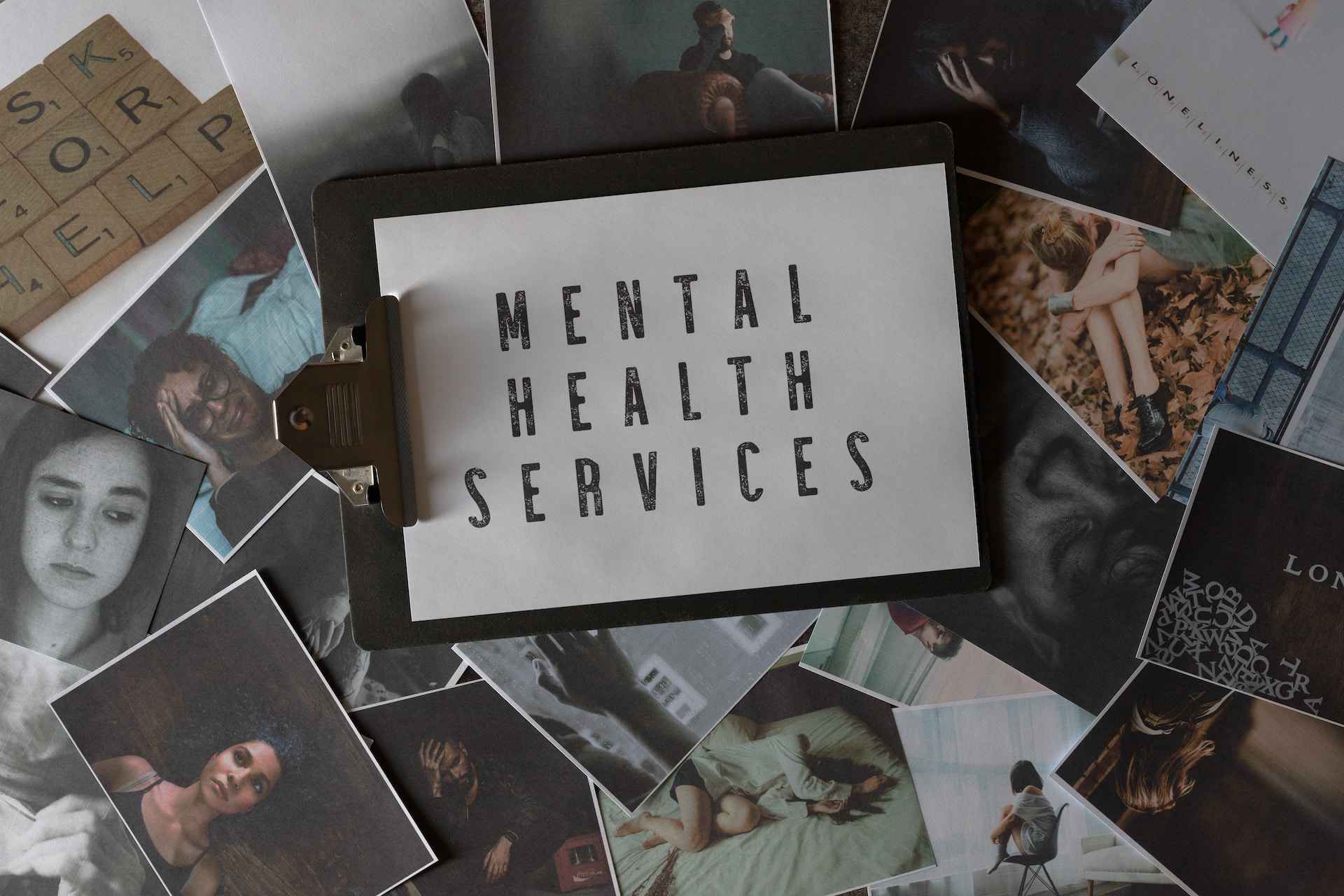- Our Firm
- Personal Injury
-
-
-
Personal Injury Lawyers
-
-
-
-
-
-
Injured in an accident? At Diamond & Diamond, our team of lawyers rely on their reputation in the field and extensive experience in personal injury to provide clients with a dedicated support system over the duration of their case.
-
-
-
-
-
HAVE YOU RECENTLY BEEN INJURED IN AN ACCIDENT?
-
-
-
- Corporate
- Class Action

Road to Recovery: How To Cope with PTSD After a Car Accident
Life on the road is often an unpredictable journey. Even when drivers are cautious, car accidents may happen, and they can leave lasting scars. In 2021, the number of fatalities from motor vehicle accidents in Canada rose to 1,768. But beyond the sobering statistics, each accident represents a human being.
Many of them grapple with physical injuries and deep psychological distress. Being in a car accident can also lead to post-traumatic stress disorder (PTSD). It’s a debilitating condition that can significantly affect one’s life. According to the studies, 11 percent of those who experience life-threatening events suffer from PTSD.
As millions of Canadians continue to use the roads on a daily basis, it becomes increasingly important to understand, recognize, and treat PTSD that arises from car accidents.
|
Key Takeaways
|
Post-Traumatic Stress Disorder (PTSD): What is it?

The human brain is naturally equipped to deal with stress. However, traumatic events, like a car crash, can significantly overwhelm its coping mechanisms. When a person undergoes such a traumatic event, their brain may retain intense emotional and sensory memories, culminating in PTSD.
Symptoms of PTSD
While symptoms may vary among individuals, they typically manifest in particular ways. Here are some of its most common symptoms:
- Intrusive thoughts: Intrusive thoughts usually take the form of recurrent, involuntary, and distressing memories of the traumatic event. These thoughts could involve:
- Flashbacks or reliving the trauma over and over, often accompanied by physical symptoms, such as sweating or a racing heart
- Nightmares about the traumatic event
- Emotional distress or physical reactions to trauma reminders
- Avoidance behaviour: This refers to efforts to avoid thoughts, feelings, or conversations related to the traumatic event and could include:
- Steering clear of places, activities, or people that remind you of the traumatic event
- Avoiding thinking or talking about the incident
- Trying to suppress memories associated with the traumatic experience
- Negative alterations in thoughts and mood: This refers to negative feelings and beliefs that can follow a traumatic event. These can manifest as:
- Feelings of hopelessness or negativity about oneself or the world
- Difficulty maintaining close relationships
- Loss of interest in activities once enjoyed
- Feeling detached or estranged from others
- Trouble experiencing positive emotions
- Changes in physical and emotional reactions: You could be experiencing one or more of the following:
- Being easily startled or frightened
- Always being on guard for danger
- Trouble sleeping or concentrating
- Irritability or angry outbursts
- Self-destructive behaviour, such as excessive drinking or driving too fast
Normal stress vs. PTSD
Auto accidents have unique characteristics that can potentially lead to PTSD. These incidents can be sudden and violent, often leaving victims feeling helpless and fearful. It’s normal to experience stress reactions after an accident. A person may have constant feelings of being on edge, experience trouble sleeping, or have recurring thoughts about the incident.
When symptoms persist for over a month, interfere with daily life, and are accompanied by feelings of detachment, it might be PTSD. This could lead to significant impairment in social, occupational, or other notable functions. These feelings that you may experience should not be attributable to a substance’s physiological effects or another medical condition.
It’s important to identify whether you have PTSD because it’s a chronic condition that often requires professional intervention. Unlike visible physical injuries that usually have a more straightforward path to recovery, emotional distress remains largely unseen. More often than not, it’s more complex to heal.
The recovery process after a car accident is twofold. Physical injuries must be addressed and treated, but equal attention should also be given to emotional trauma. Mental health professionals have a critical role in this aspect. They must help victims navigate their emotional distress, teach coping strategies, and provide therapeutic interventions so that the person can heal.
PTSD can have a lasting impact, but individuals can return to normalcy with proper care and support. Remember that just as physical injuries require attention and care, so does our mental health.
Early Intervention and Diagnosis of PTSD

Early intervention is critical when managing PTSD. Recognizing the signs and symptoms and seeking professional help at the earliest opportunity can significantly improve the chances of recovery and reduce its impact on one’s life.
Immediately after a car accident, people get caught up in a whirlwind of hospital visits and insurance claims. Victims sometimes pay more attention to dealing with uninsured drivers or car repairs.
Symptoms of trauma may be overlooked or disregarded as temporary stress reactions during this hectic period. Mental health shouldn’t be an afterthought but a significant part of your recovery process.
Navigating through insurance coverage can be an added stressor. However, you should keep in mind that many insurance plans include coverage for mental health services. Don’t hesitate to use these benefits to seek the professional help you need.
It’s also important to watch for symptoms of depression. Monitor for feelings of sadness or hopelessness, loss of interest in activities previously enjoyed, and difficulties in sleeping or concentrating. These could be signs of a co-occurring disorder common in people with PTSD.
Seeking professional help
If you recognize these symptoms in yourself or someone else, the next step is to seek help from a healthcare provider. You could contact a general practitioner, a psychologist, or a psychiatrist. They can provide you with a proper assessment and guide you through the following steps.
Remember that you shouldn’t wait until the symptoms become unbearable before you seek help. The sooner you reach out for help, the faster you can start on the path to recovery.
Diagnosis of PTSD typically involves a thorough psychological evaluation and a physical exam to rule out other conditions.
Treatment Options for PTSD

PTSD resulting from a car accident can be a life-altering condition. With proper treatment, individuals regain control of their lives, manage their symptoms, and significantly improve their overall quality of life. Treatment usually includes psychotherapy, medication, or both, and it’s tailored to each individual’s needs.
Psychotherapy
Psychotherapy, or talk therapy, involves speaking to a mental health professional about the traumatic event and related issues. It’s proven to be highly effective in treating PTSD. An effective form of psychotherapy is cognitive behavioural therapy (CBT).
CBT’s goal is to change the patterns of thinking or behaviour behind an individual’s difficulties. The therapist identifies these harmful thought patterns and helps them address it. For instance, a person might unjustly blame themselves for the accident, leading to feelings of guilt and distress. They help the patient to challenge these thoughts and to see the situation in a more realistic and less harmful way.
CBT is generally done through the following ways:
Prolonged exposure therapy: This type of therapy helps reduce the fear and avoidance associated with the traumatic memories of the car accident. The individual is gradually exposed to the thoughts, feelings, and situations that remind them of their trauma.
For example, one might feel intense fear when thinking about driving. Through graded exposure, people with PTSD can gradually confront and manage these fears. They might start by imagining that they’re sitting in a stationary car before actually sitting in a car while someone else drives. Over time, these steps help individuals manage intense fear responses and regain their ability to function normally.
Stress inoculation therapy: Stress inoculation therapy (SIT) uses “inoculation” to help individuals build an ‘immunity’ or ‘resistance’ to future stressful situations related to their trauma.
For a car accident survivor, SIT might include relaxation techniques, like deep breathing, positive visualization, and progressive muscle relaxation. The individual might also learn positive self-talk and cognitive restructuring to handle stressful thoughts related to their trauma. Practice starts during therapy sessions and before real-life applications.
Eye movement desensitization and reprocessing (EMDR): This management combines exposure therapy with guided eye movements. This therapy changes the reaction to traumatic memories. It is particularly effective for people with PTSD from single-event traumas, like a car accident.
Medications
Mental health professionals often use medication to address some PTSD symptoms. They often use the following classes of drugs:
- Antidepressants: These drugs increase serotonin and norepinephrine levels in the brain, which are often low in people with depression and anxiety disorders. For car accident survivors, these medications can help reduce symptoms, like overwhelming sadness, worry, difficulty concentrating, and numbness of emotions.
- Anti-anxiety medications: These are primarily used to manage symptoms of anxiety that often accompany PTSD. For example, benzodiazepines, which are sedatives that help people feel less anxious and more relaxed, are often prescribed. However, because of the risk of dependency, the prescription is generally short-term.
- Antipsychotics: These medications are typically reserved for more severe cases of PTSD or when a person hasn’t responded to other treatments. Antipsychotics, such as risperidone or olanzapine, can help with severe anxiety and difficulty sleeping. They can also address symptoms of agitation or anger. However, since they carry a risk of severe side effects, their use needs to be closely monitored by a healthcare provider.
Medication and dosage depend on the person’s symptoms, overall health, mental or physical conditions, and drug response.
Each of these medications comes with potential side effects that range from mild to severe. Some common side effects include dry mouth, nausea, dizziness, restlessness, weight gain, and changes in sleep patterns.
More severe risks can include worsening depression, suicidal thoughts, or severe impacts on physical health. For these reasons, starting a medication should always involve discussing risks and benefits with a healthcare provider.
Self-Care and Coping Mechanisms for PTSD

After experiencing a traumatic event, such as a car accident, engaging in self-care practices and healthy coping mechanisms can help. A traumatic event can have a severe impact on a person’s daily life, affecting their work, relationships, and general well-being.
Mind-body techniques
Engaging in mind-body techniques can be a beneficial component of managing symptoms of PTSD. These self-care coping mechanisms and relaxation techniques focus on the connection between the mind and the body. They provide natural ways to reduce anxiety, improve mood, and promote relaxation.
- Deep breathing: Deep breathing exercises are simple and can be done anywhere. They involve focusing on slow, deep breaths, which can calm the nervous system, reducing feelings of anxiety and stress.
- Trauma-informed yoga: This therapeutic approach combines the physical practice of yoga with an understanding of trauma’s physiological and psychological effects. This type of yoga ensures that it’s sensitive to the needs of those with trauma, especially PTSD. It emphasizes on creating a safe and non-judgmental environment for practitioners.
Trauma-informed yoga focuses not just on the physical poses, but also on the internal experience of the practitioner. The aim is to help individuals reconnect with their bodies and become aware of their physical presence. Many trauma survivors struggle with this because of dissociation or detachment from their bodies.
- Acupuncture: Some studies suggest that acupuncture may help reduce symptoms of PTSD. This traditional Chinese technique involves inserting thin needles into specific points of the body, which is believed to balance the body’s energy flow.
- Journaling: Writing about thoughts and feelings can provide a therapeutic outlet for dealing with trauma. It can help one process their experiences, reduce feelings of distress, and improve psychological well-being.
Healthy lifestyle
Maintaining a healthy lifestyle is another important aspect of managing symptoms of PTSD. Taking care of one’s physical health can have a significant impact on one’s mental health.
- Sleep: Sleep disturbances are common in individuals with PTSD. Establishing a regular sleep schedule, engaging in relaxing activities before bedtime, and having a comfortable sleep environment can improve sleep quality.
- Diet: A balanced diet supports brain function, mood regulation, and stress response. This includes consuming various fruits, vegetables, lean proteins, whole grains, and healthy fats.
- Exercise: Regular physical activity releases endorphins, which are natural mood lifters that can help reduce symptoms of depression and anxiety and improve overall mental health. Even simple activities, such as walking or yoga, can have significant benefits.
Support groups
Support from others who have experienced similar situations can be incredibly healing. Support networks provide a safe space to share experiences, feelings, and coping strategies. It can help to reduce feelings of isolation, provide emotional support, and offer practical advice from those who have been there.
Family members also play a critical role in the recovery process. Their understanding, patience, and support can make a significant difference in helping their loved ones recover from the trauma. Family members must also take care of their own mental health during this challenging time because seeing a loved one suffer can impact their state of mind as well.
Remember that what works will vary from one person to another. It’s about finding the best strategies for you and your loved ones.
Long-Term Management and Quality of Life

The long-term effects of a traumatic car accident vary among individuals. Some might experience persistent anxiety and fear, while others struggle with flashbacks or nightmares.
By identifying and changing maladaptive thought patterns, proper management can significantly reduce the symptoms of PTSD and related conditions, like depression and anxiety. Over time, this can improve various areas of life, including social functioning, work performance, and overall well-being.
With proper treatment and ongoing management, a person with PTSD can still lead a fulfilling and satisfying life.
Legal Aspects of a Car Accident and PTSD

If you developed PTSD from a car accident, there may be legal implications. You may be eligible for compensation because of your psychological and physical injuries. With the help of a personal injury lawyer, you’ll understand what your legal rights and options are.
Personal injury lawyers practice tort law, which includes all civil litigation for injuries or wrongdoings resulting from someone else’s negligence.
Here’s how they can help car accident survivors recover from PTSD:
Evaluate the case
A personal injury lawyer typically begins by providing a free consultation to potential clients.
During this consultation, the lawyer will gather details about the car accident, such as how it happened and the injuries you’ve sustained. They’ll also explore other issues, such as whether you have PTSD. This information will allow them to assess the strength of your case, the severity of your injuries, the impact the accident has had on your life, and the extent to which the other party is liable.
Guide through the legal process
The legal process is complicated, and it can feel overwhelming when someone is already dealing with trauma from a car accident. Personal injury lawyers guide clients through this process, providing clarity and assistance at every step. They explain the stages of the case, from filing an initial claim to negotiating a settlement or going to trial.
They also tell clients about timelines, the documents needed to support their case, and what they should expect from the process. This guidance can significantly reduce the stress and uncertainty of navigating the legal system.
Representation in negotiations with insurance companies
Dealing with insurance companies can be daunting. Insurers often aim to minimize payouts and may deny claims or offer lower settlement amounts than what is fair.
A personal injury lawyer makes sure that all information, medical records, and evidence of psychological injuries, like PTSD, are accurately presented to the insurance company. Their expertise and negotiation skills can be pivotal in securing a fair settlement.
Assist in litigation
If negotiations don’t result in a fair settlement, a personal injury lawyer can take the case to court. They’ll work tirelessly to prove that the other party caused their client’s injuries so that their client gets the compensation they deserve.
Pursue compensation
One of the main objectives of a personal injury lawyer is to help their clients get compensation for their injuries and losses. These losses could include medical bills for injuries, cost of therapy for managing PTSD, and lost wages due to time off work.
A personal injury lawyer understands the significant financial strain and the accompanying trauma a person experiences after a car accident. Their primary goal is to make sure that their client is compensated for their injuries.
Given the potentially life-altering impact of PTSD and the complexity of the legal process, having a professional car accident lawyer handle your case can make a significant difference. It can be the most important aspect of making sure that you receive the support and compensation you need to cope with PTSD and other accident-related injuries.
Engage in sensory grounding techniques. These activities can be helpful during moments of intense distress or flashbacks. This involves focusing on the details of your surroundings or the sensations in your body to help bring you back to the present moment.
Pro Tip
Navigating the Complex Path of PTSD After a Car Accident

PTSD can add a complex layer to your road to recovery. While it might seem daunting, remember that PTSD isn’t a life sentence, and it doesn’t define you. With appropriate treatment and support, individuals with PTSD can manage their symptoms, improve their quality of life, and lead fulfilling lives.
If you or someone you know shows symptoms of PTSD following a car accident, seek professional help. It’s important to recognize that social understanding, support, and acceptance are essential for creating an environment that encourages healing.
Whether physical or psychological, if you’ve suffered serious injuries after a car accident, don’t hesitate to seek legal help. A personal injury lawyer can guide you through the process. They’ll help you understand your rights, represent your interests, and help you secure compensation.
Start your journey to recovery. If you’re experiencing PTSD after a traumatic car accident, seek legal help. Contact our car accident lawyer at Diamond & Diamond today!
Disclaimer: While this post is intended to provide helpful information about PTSD after a car accident, it’s not a substitute for professional medical or legal advice. If you’re experiencing symptoms of PTSD or other health issues, consult a healthcare provider.
Need a Lawyer?
We are here 24/7 to address your case. You can speak with a lawyer to request a consultation.
1-800-567-HURTGet started with a free consultation
OUR TEAM
- Ishmeet Sandhu
- Nolan Bachmann
- Marissa Faulkner
- Annamarie Demaj
- Jeffrey Hum
- Tofunmi Adeyeye
- Alessia De Gasperis
- Amandeep Chawla
- Jeremy Tsoi
- Kimiya Razin
- Bilal Hashimy
- Shir Zisckind
- Gray Sinden
- Shelly Bard
- Christian Brown
- Daly Canie
- Tanveer Sohal
- Prianka Virdi
- Noah Brownstone
- Justin Kaminker
- Harinder S. Bhatti
- Craig Yargeau
- Kiran Birk
- Amit Singh
- Andrei Teju
- Maria Zahid
- Matthew Douglas
- Jacob Elyk
- Harry Gill
- Kristina Olivo
- Egi Bano
- Cam Woolley
- Charles Thompson
- Alexandra McCallum
- John Sime
- Allan Cocunato
- Patrick Poupore
- Erika Henderson
- Marina Korshunova
- Brandon Handelman
- Regeena Alapat
- Ryna Kim
- Natalia Poliakova
- Isaac Zisckind
- Manpreet Bhogal
- Mathura Santhirasegaram
- Nikolai Singh
- Sandra Zisckind
- Jeremy Diamond
- Michael Blois
- Darryl Singer
- Nadia Condotta
- Tinashe Madzingo
- Megan Armstrong
- Veronica D’Angelo
- Corey J. Sax
- Scott Tottle
- Steven Wilder
- TJ Gogna
- Jillian Carrington
- Joshua Himel
- Simon Diamond
- Cory Rubin
- Simon Mariani
- Brandon Greenwood
- Basil Bansal
- Nastassia Ivanova
- Tania Fleming
- George Laloshi
- Patrycja Majchrowicz
- Diana Iakossavas
- Dior Africa
- Alex Ragozzino
- Liana Saccucci
- Richard J. Chang
FAQs on Coping With PTSD After a Car Accident
Can PTSD symptoms appear years after a car accident?
Yes, symptoms of PTSD can indeed appear years after a car accident. It’s common for symptoms to begin within three months of the traumatic incident. In some cases, however, symptoms may not appear until years later.
Can I fully recover from PTSD after a car accident?
Yes, full recovery is possible. Note that multiple factors, such as the severity of the trauma, resilience, access to timely and effective treatment, and a strong support network, influence recovery.
Each person’s journey with PTSD is unique, and recovery will look different for everyone, so you shouldn’t compare your progress with others. Instead, you should focus on individual growth, healing, and well-being.
Can PTSD also affect my physical health?
Yes, PTSD can affect your physical health. Chronic stress associated with PTSD can have wide-ranging effects on the body. It can cause sleep disturbances and changes in appetite. It also increases the risk of other health conditions, such as heart disease and autoimmune disorders.
NEED A LAWYER? CONTACT OUR TEAM TODAY
Chat Now
OR CALL NOW FOR A FREE CONSULTATION
 1-888-INFO-LAW
1-888-INFO-LAW
Head Offices
Main Offices
Barrie
Main Office
168 Bayfield Street
Calgary
Main Office
1331 Macleod Trail SE, Suite 645
Edmonton
Head Office
4246 97 Street NW, Unit 103
Halifax
Consultation Office
1701 Hollis St
London
Main Office
256 Pall Mall St, Suite 102
Oshawa
Consultation Office
50 Richmond Street E, Unit # 108 B
Ottawa
Main Office
955 Green Valley Crescent, Unit 315
Sudbury
Main Office
31 Larch Street, Unit 300
Timmins
Main Office
120 Cedar Street South, Unit 002A
Toronto
Head Office
255 Consumers Road, 5th Floor
Vancouver
Head Office
1727 West Broadway, Suite 400
Windsor
Main Office
13158 Tecumseh Rd. E. Unit 3B
Additional Areas Served
Ontario
- Ajax
- Alberta
- Aurora
- Barrie
- Belleville
- Bowmanville
- Brampton
- Brantford
- Brockville
- Bracebridge
- Bradford
- Burlington
- Burnaby
- Calgary
- Chatham
- Cobourg
- Collingwood
- Cornwall
- Durham
- Edmonton
- Elliot Lake
- Etobicoke
- Georgetown
- Guelph
- Hamilton
- Huntsville
- Kanata
- Kelowna
- Kingston
- Kitchener
- Leamington
- London
- Markham
- Milton
- Mississauga
- Muskoka
- Niagara Falls
- Newcastle
- Newmarket
- North Bay
- North York
- Oakville
- Orangeville
- Orillia
- Oshawa
- Ottawa
- Owen Sound
- Parry Sound
- Perth
- Peterborough
- Pickering
- Prince Edward County
- Richmond
- Richmond Hill
- Sault Ste Marie
- Sarnia
- Scarborough
- St. Catharines
- St. Thomas
- Stouffville
- Sudbury
- Surrey
- Thunder Bay
- Timmins
- Toronto
- Uxbridge
- Vancouver
- Wallaceburg
- Waterloo
- Welland
- Whitby
- Windsor
- Woodstock













